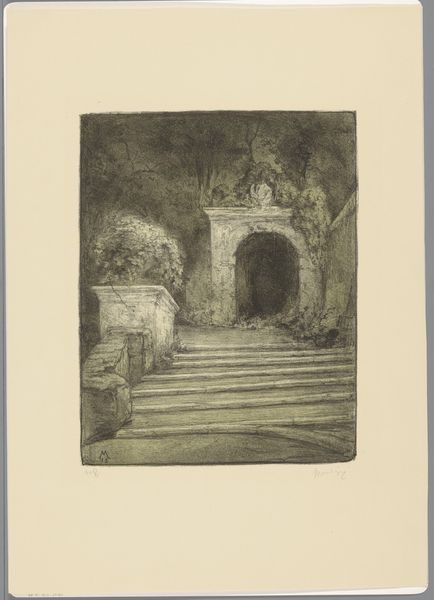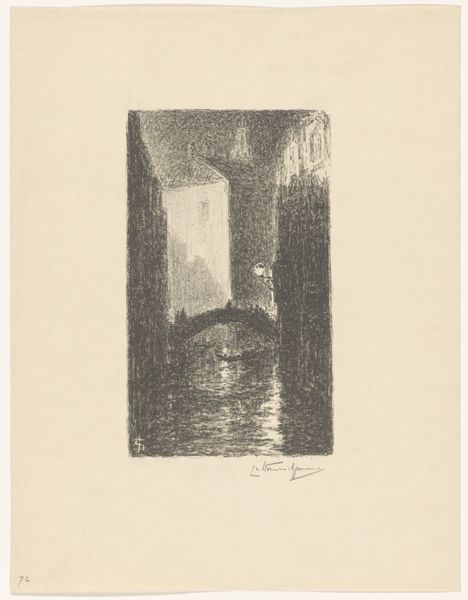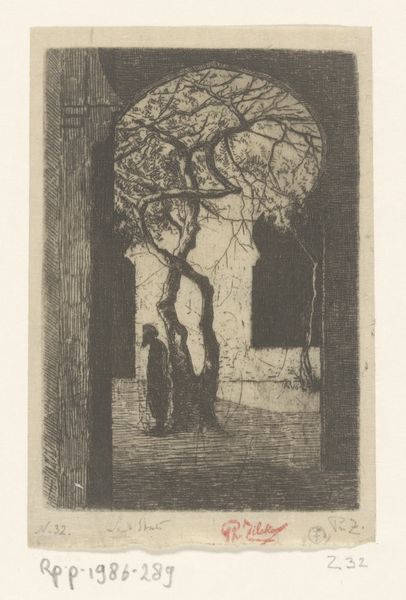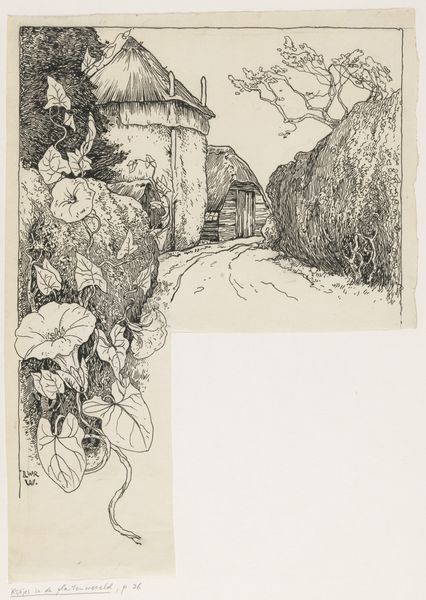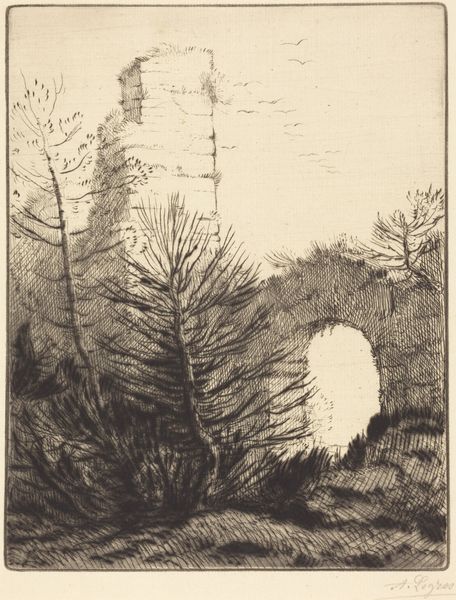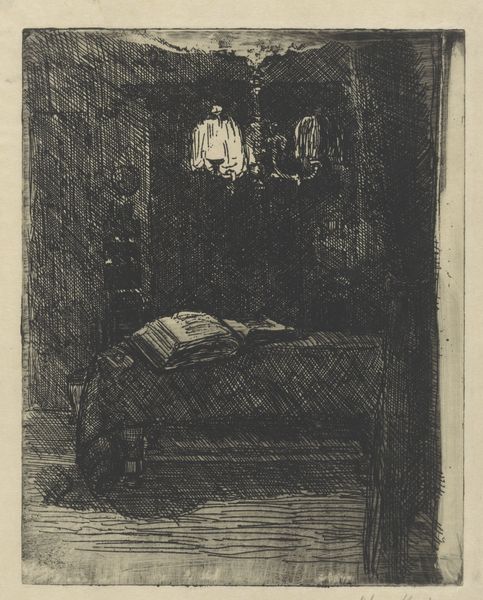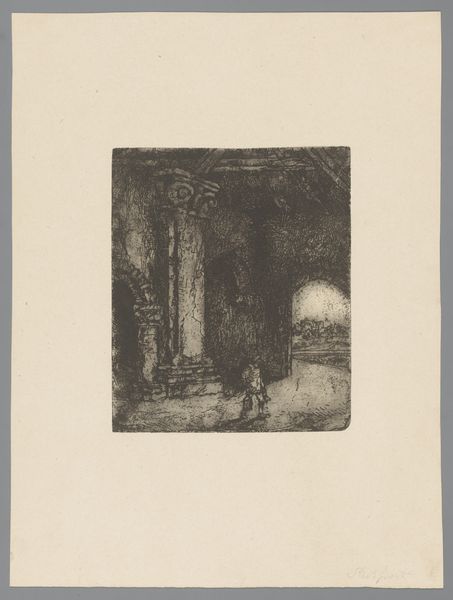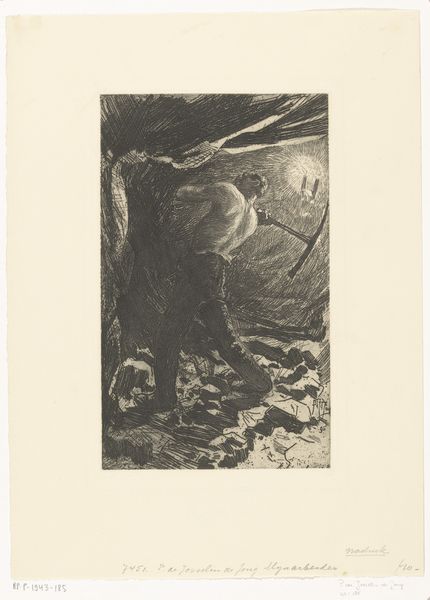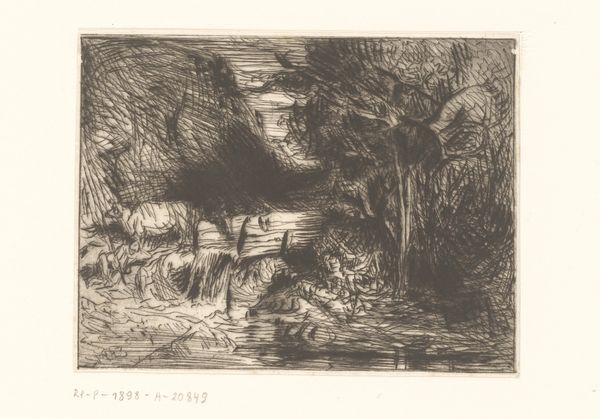
Si par une nuit lourde et sombre, un bon chretien, par charite, derriere quelque vieux decombre, enterre votre corps voute (If on a close dark night a good Christian, out of charity, behind some old ruin, buries your arched body) 1890
0:00
0:00
Copyright: National Gallery of Art: CC0 1.0
This haunting print by Odilon Redon presents us with a nocturnal scene rendered in stark blacks and whites. A strange, tomb-like structure anchors the composition amidst swirling, chaotic lines that evoke a sense of unease. This interplay between clarity and obscurity is key to understanding Redon's aesthetic project. Redon, working in late 19th-century France, was deeply invested in exploring the subconscious. Here, the lithographic medium itself contributes to this effect, as the velvety blacks emerge from the paper's surface. Note how the wispy lines and floating figures seem to materialize from a dream. The print can be interpreted through the lens of semiotics. The tomb-like structure, the disembodied head, and the swirling darkness function as signs pointing toward mortality, the uncanny, and the limits of rational understanding. Redon's art operates on the threshold between representation and abstraction, challenging viewers to confront the hidden depths of the human psyche. He prompts us to contemplate the unstable nature of meaning itself.
Comments
No comments
Be the first to comment and join the conversation on the ultimate creative platform.

